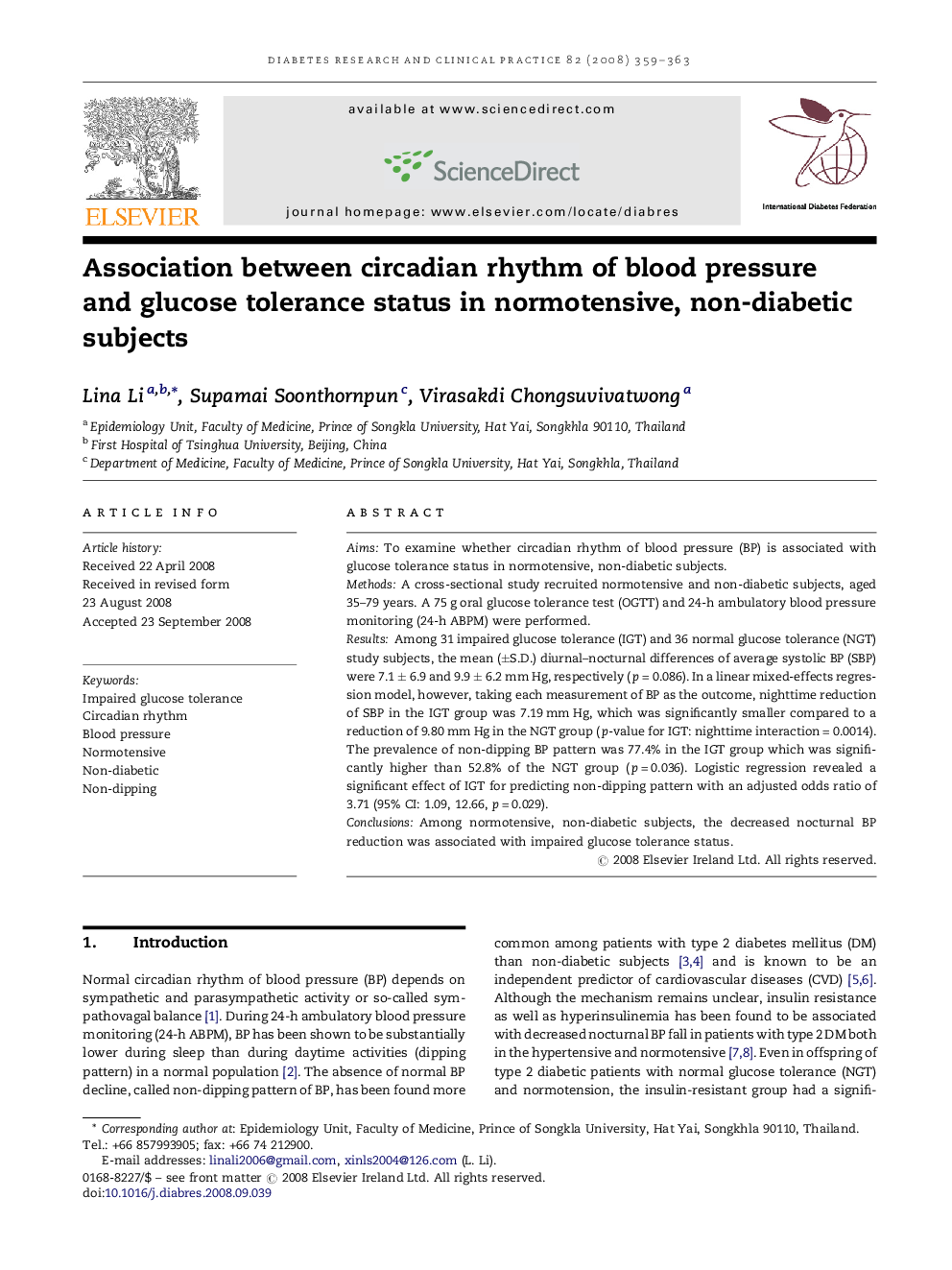| Article ID | Journal | Published Year | Pages | File Type |
|---|---|---|---|---|
| 2798152 | Diabetes Research and Clinical Practice | 2008 | 5 Pages |
AimsTo examine whether circadian rhythm of blood pressure (BP) is associated with glucose tolerance status in normotensive, non-diabetic subjects.MethodsA cross-sectional study recruited normotensive and non-diabetic subjects, aged 35–79 years. A 75 g oral glucose tolerance test (OGTT) and 24-h ambulatory blood pressure monitoring (24-h ABPM) were performed.ResultsAmong 31 impaired glucose tolerance (IGT) and 36 normal glucose tolerance (NGT) study subjects, the mean (±S.D.) diurnal–nocturnal differences of average systolic BP (SBP) were 7.1 ± 6.9 and 9.9 ± 6.2 mm Hg, respectively (p = 0.086). In a linear mixed-effects regression model, however, taking each measurement of BP as the outcome, nighttime reduction of SBP in the IGT group was 7.19 mm Hg, which was significantly smaller compared to a reduction of 9.80 mm Hg in the NGT group (p-value for IGT: nighttime interaction = 0.0014). The prevalence of non-dipping BP pattern was 77.4% in the IGT group which was significantly higher than 52.8% of the NGT group (p = 0.036). Logistic regression revealed a significant effect of IGT for predicting non-dipping pattern with an adjusted odds ratio of 3.71 (95% CI: 1.09, 12.66, p = 0.029).ConclusionsAmong normotensive, non-diabetic subjects, the decreased nocturnal BP reduction was associated with impaired glucose tolerance status.
